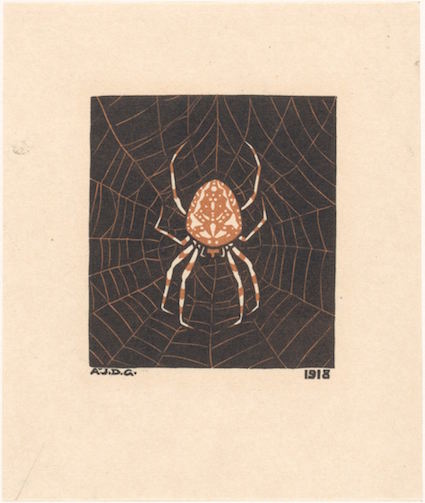[ad_1]

Julie de Graag, Spin in een web, 1918.
COURTESY RIJKSMUSEUM
News
After two-years and €9 million of construction, La Piscine Museum in Roubaix, France has reopened. Along with its famous art deco swimming pool, the institution has a robust collection of works by Giacometti, Rodin, Picasso, and others. [The Guardian]
In the wake of the killing of journalist Jamal Khashoggi, some architects and designers are suspending their involvement in a $500 billion Saudi Arabian “megacity” project. [The Architect’s Newspaper]
The MO Museum opened in Vilnius, Lithuania last week. The new enterprise showcases the 4,000-work collection of Viktoras and Danguole Butkus. [The Art Newspaper]
The Joslyn Art Museum in Omaha has enlisted Norwegian architectural firm Snøhetta for its expansion project, which will add new galleries and spaces for educational initiatives and public programs. [Artforum]
Exhibitions
Tomás Saraceno describes his show for the Palais de Tokyo’s biannual Carte Blanche series as “a synesthetic, bodily experience, a journey.” The exhibition, titled “On Air,” spans 64,500-square-feet and puts the artist’s interest in arachnids on full view. It features spider web sculptures, musical concerts, a massive balloon comprised of recycled plastic bags, and many more wonders. [The New York Times]
Here’s a piece on Guadalupe Rosales’s Instagram archives of photos of Chicano youth and her exhibition, “Echoes of a Collective Memory,” at the Vincent Price Art Museum of East Los Angeles College. The director of the museum, Pilar Tompkins Rivas, said of the artist, “She’s building this archive of images of women that mass media doesn’t have. It’s an important exercise in feminism.” [Los Angeles Times]
Market
The Museu de Arte Moderna do Rio de Janeiro will sell Jackson Pollock’s Number 16 at Phillips on November 15. The work, which could go for $18 million at auction, was first purchased for $306 by Nelson Rockefeller in 1950. [Bloomberg]
And more!
A new book details Agnes Martin’s philanthropic contributions to various causes in New Mexico. Henry Martin, author of Agnes Martin: Pioneer, Painter, Icon, writes, “In the 1990s she had made millions off her art and was eager to repay the kindness her community had showed her during her own years of struggle.” [Hyperallergic]
A new article from The New Yorker titled “The Myth of Whiteness in Classical Sculpture.” [The New Yorker]
Finally, prepare to be charmed and delighted by these imagined interactions between famous sculptures. [The New Yorker]
[ad_2]
Source link

